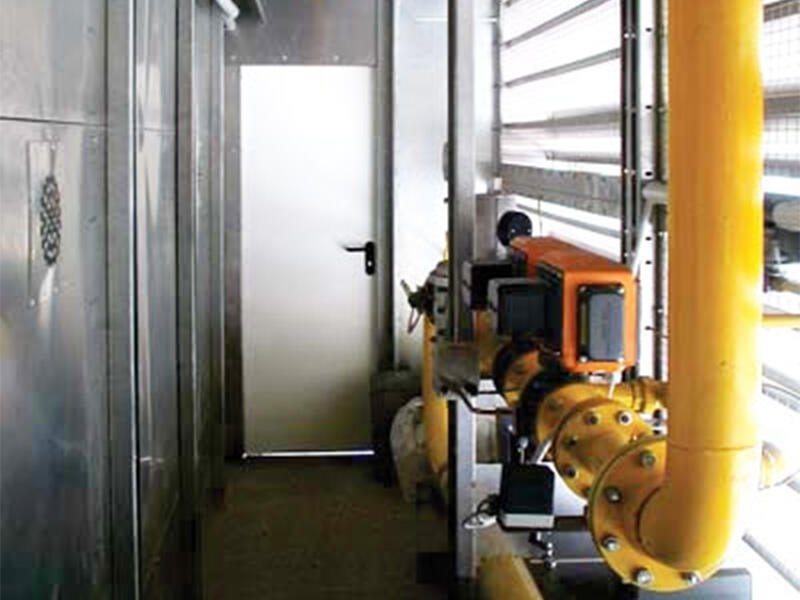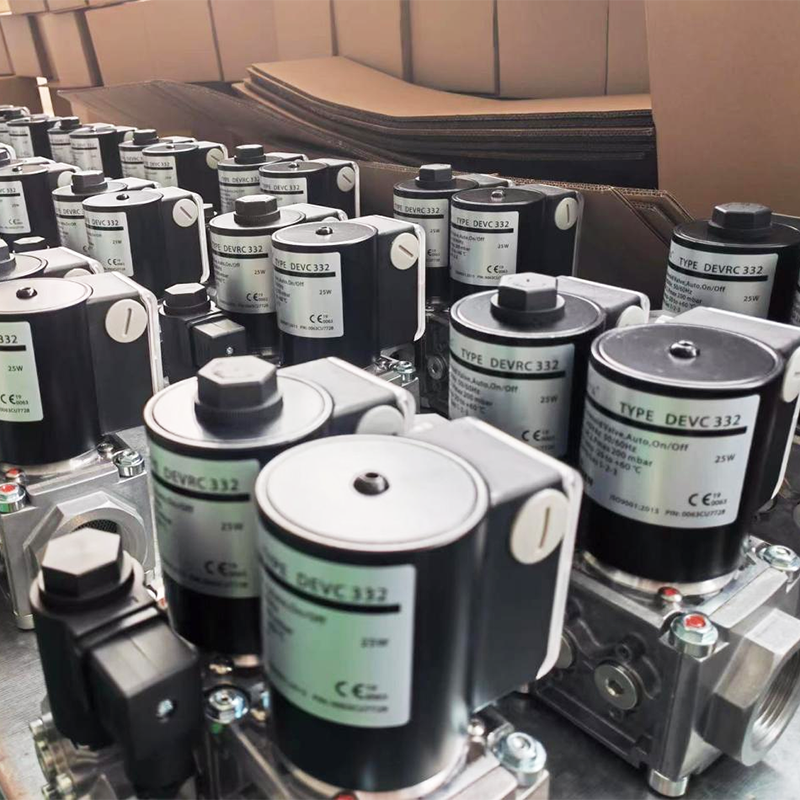Pressure and Temperature Specifications
Picking out the right gas solenoid valve means paying close attention to pressure specs and temperature ranges. When shopping around, it's important to match valves with their intended operating conditions because getting this wrong can lead to all sorts of problems down the line. Take industrial settings for example most equipment runs somewhere between zero and two hundred pounds per square inch, while temperatures usually stay within minus twenty degrees Fahrenheit up to one hundred eighty degrees. Getting familiar with these numbers makes all the difference when choosing something that works reliably day after day without breaking down or causing accidents. Companies behind these products spend a lot of time testing them under different scenarios so they know exactly what each model can handle. They publish detailed spec sheets showing how well their valves perform against various industry benchmarks, which helps engineers make informed decisions about what fits best for their particular needs.
Gas Type Compatibility
When picking out gas solenoid valves, how well they work with different gas types matters a lot. Valves need to stand up to stuff like natural gas, propane, maybe even butane without breaking down over time. The type of gas actually influences what materials get used for the valve body and seals, which then affects how well everything performs under pressure. That's why most manufacturers run through some pretty thorough tests before shipping products off to customers. Testing isn't just about checking boxes it helps spot potential leaks early on and makes sure all those internal parts last longer despite whatever corrosive effects certain gases might have after months or years of operation.
Flow Rate Requirements
Getting a handle on what kind of flow rate the system needs is really important when picking out a gas solenoid valve. If the flow rate isn't right, the whole system won't run efficiently, so finding a valve that matches the actual demand makes all the difference. Most folks measure flow using either SCFM (standard cubic feet per minute) or liters per minute to figure out what size valve will give them proper control. Energy companies especially depend on good flow rate calculations because getting it wrong can mean wasted power or unexpected shutdowns. That's why taking time to measure accurately isn't just about technical specs it's actually about keeping operations running smoothly without surprises down the road.
Safety Features and Compliance
When picking out gas solenoid valves, safety features and meeting industry standards really matter. The valves need built-in protections like pressure relief systems and fail-safe mechanisms that kick in during emergencies to stop accidents or system breakdowns. Most manufacturers follow guidelines from organizations like ANSI and ISO. These aren't just paperwork requirements they actually make sure the valves work safely and reliably across different industries. We've seen this play out in real situations too. A chemical plant once avoided a major incident because their valves had proper fail-safes installed according to these standards. That kind of real world protection makes all the difference between smooth operations and costly downtime.
Application-Specific Requirements for Industrial Systems
Gas Burner Systems and Combustion Safety
Gas solenoid valves are essential components in most gas burner systems, mainly because they control ignition safety and help improve how well the fuel burns. Their main job is regulating gas flow, which means they're needed both when starting up the burner and keeping it running properly. A failed valve isn't just inconvenient it can actually cause serious problems during combustion. Industry reports indicate around 15% of all combustion troubles come from faulty valves, which shows why these parts matter so much. That's why many businesses stick strictly to combustion safety standards for their commercial burners. Following these guidelines helps avoid those costly breakdowns and keeps operations running smoothly without unexpected shutdowns.
Boiler Operations and Efficiency
Picking the right gas solenoid valve makes all the difference when it comes to how well boiler systems run day after day. Boiler operators know this from experience because the wrong valve choice impacts important numbers like combustion efficiency ratings that matter a lot for keeping energy costs down. Take a look at what happens in practice: boilers equipped with correctly selected valves often see around 10% better efficiency rates. That translates to real money saved on fuel bills plus fewer harmful emissions going into the atmosphere. Industrial plants across manufacturing sectors report similar findings where proper valve installation leads to smoother operations and lower maintenance headaches over time. The connection between smart valve choices and overall system performance is pretty clear once companies start tracking their actual results rather than just theoretical models.
Industrial Process Line Integration
When installing gas solenoid valves in complicated industrial setups, compatibility with current systems is absolutely essential. The modular approach matters too – getting the right valve configuration for each application really makes things run better across the board. Customized valve packages help avoid those frustrating problems we all know too well from experience, like mismatched components or tricky maintenance tasks down the road. Plants that tackle these potential headaches upfront tend to keep their production running without interruptions, which means less lost time and money spent on emergency fixes later on.
Emergency Shut-off Configurations
Shut off valves play a vital role in gas systems that use solenoid valves, acting as lifesavers when something goes wrong or there's an emergency situation. These valves respond fast and meet all the required safety regulations, which helps cut down on dangers from gas leaks or equipment breakdowns. How these emergency setups work can differ quite a bit across industries, though most installations have backup systems plus automatic failsafe mechanisms ready to stop gas flow whenever needed. Looking at actual plant safety records shows time and again that properly set up shut off systems prevent disasters from happening, making them absolutely crucial part of any serious industrial safety plan.
Material and Design Considerations for Optimal Performance
Corrosion-Resistant Valve Body Materials
When it comes to industrial systems, picking materials that resist corrosion for valve bodies matters a lot, especially where there's exposure to corrosive elements. Most folks go with stainless steel, brass, or top quality plastics because they stand up well against rust and decay. Take stainless steel for example it handles pretty much any chemical thrown at it and lasts forever in tough situations. Brass gets picked quite often too since it works great when machining and holds up okay in places with light corrosion issues. High grade plastics have become popular alternatives lately too, standing their ground even under pretty harsh conditions. Standards organizations like ASTM actually test these materials to make sure they work properly in demanding settings, which gives engineers peace of mind knowing what they specify will hold together over time.
Seal Integrity for Hazardous Gas Containment
Getting good seal integrity in gas solenoid valves matters a lot when dealing with dangerous gases because even small leaks can create serious safety problems on site. Industries rely on different sealing methods like O-rings and gaskets since they work well across pressure ranges and temperature variations. O-rings tend to be pretty solid for both moving parts and fixed connections, while gaskets come in handy where there's complicated geometry to deal with. We've seen plenty of incidents where faulty seals led to shutdowns and fines, which makes choosing the right sealing tech absolutely critical. When companies invest time into picking the appropriate seal material and design, they typically see fewer accidents and better performance from their equipment over time.
Sizing for System Pressure Demands
Getting the right size for gas solenoid valves based on actual system pressure needs matters a lot when it comes to avoiding breakdowns or wasted energy. When valves are properly sized, they manage their assigned flow rates and pressure levels without creating problems down the line or letting performance slip. To figure out what size works best, engineers look at things like expected pressure losses across different parts of the system and how much fluid moves through per minute. Industry standards groups such as ASME have developed detailed guides that help technicians make smart choices about which valves fit particular applications. Valves that match the system requirements keep everything running smoothly and actually improve how well systems perform where even small changes in pressure can cause big issues.
Compliance and Certification Standards
Understanding CSA Certification
CSA certification from the Canadian Standards Association is really important when it comes to gas solenoid valves needing to pass strict safety checks and performance requirements. For businesses operating in dangerous settings where explosions or leaks could happen, getting CSA certified means they're following proper safety protocols. To get certified, manufacturers must go through extensive tests and submit detailed paperwork proving their products actually meet those CSA standards. Many companies run into problems trying to adjust their valve designs to fit within CSA guidelines while also gathering all the necessary documentation for approval. Looking at industry trends, oil and gas operations, factories, and heating systems across North America are increasingly looking for CSA marked equipment. This isn't just about ticking boxes for regulators either it helps keep workers safe and maintains trust in the marketplace where safety matters most.
ISA-96 Actuator Compatibility
ISA-96 standards play a key role in keeping actuators compatible across gas applications while meeting industry safety and efficiency demands. What these standards really do is create a common ground for everyone working with valve actuators so decisions get made based on shared understanding rather than guesswork. When things don't match up properly, companies end up paying the price through unexpected downtime and broken equipment. Real world examples show how mismatched specs have caused serious problems before. One plant had to shut down completely when their new actuators wouldn't work with existing systems. Following ISA-96 isn't just about ticking boxes either it actually works to prevent those kinds of headaches by making sure everything plays nicely together. This compatibility means fewer surprises during operation and saves money on repairs down the road.
Testing Protocols for Leak Prevention
Testing procedures for preventing leaks in gas solenoid valves are absolutely essential if we want to maintain both safety and efficient operations. Most professionals stick to tried and true methods like pressure tests and bubble tests when checking these valves. Pressure testing basically means putting pressure on the valve and watching closely for any drop in pressure levels. Bubble testing works differently it lets technicians actually see where leaks might be happening by applying a special solution that creates bubbles at the problem spots. We've seen plenty of cases where small leaks in gas systems have caused major safety issues and cost companies thousands in repairs. That's why many facilities now run regular checks on their valves. These tests do more than just keep workers safe they also save money in the long run and help meet all those strict industry safety regulations that everyone has to follow.



